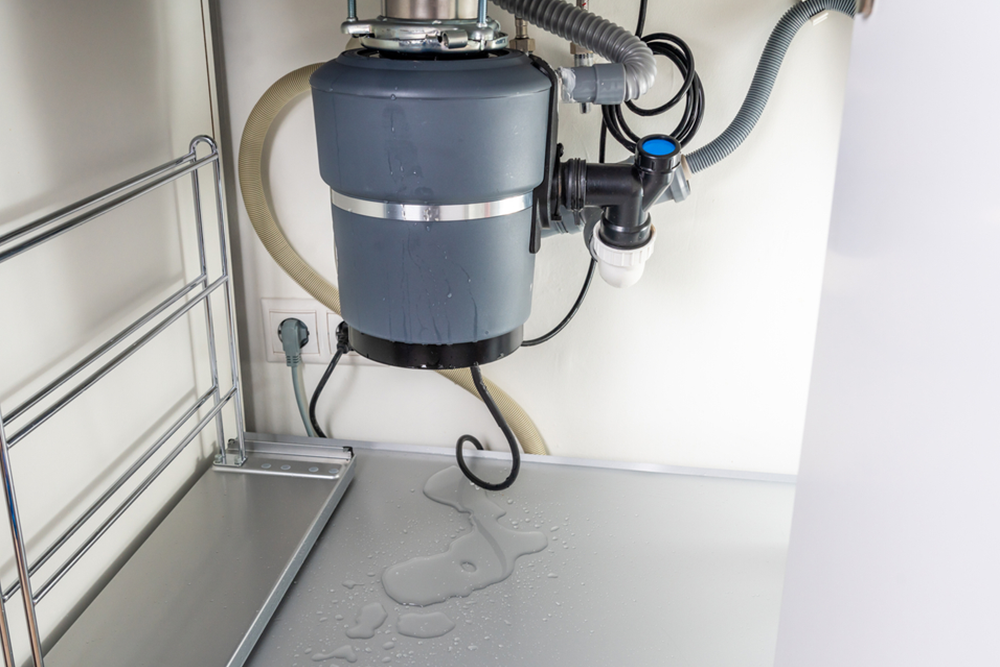Swift Fixes for a Dripping Garbage Disposal
Swift Fixes for a Dripping Garbage Disposal
Blog Article
We have unearthed this post on Tips on Fixing a Leaking Garbage Disposal directly below on the internet and thought it made sense to write about it with you in this article.

Garbage disposals are crucial kitchen home appliances that assist in getting rid of food waste efficiently. Nevertheless, a leaking garbage disposal can be an aggravating and untidy problem to handle. Luckily, lots of leaks can be repaired conveniently with a few simple steps. In this article, we will discuss just how to repair a leaking garbage disposal effectively.
Intro
Waste disposal unit are set up under kitchen area sinks and are created to shred food waste right into smaller items, allowing it to pass through the plumbing system quickly. While these tools are generally reputable, leakages can occur in time because of damage, loose links, or damages to the unit.
Usual Causes of Leakages in Waste Disposals
Worn Seals and Gaskets
Seals and gaskets play an important function in protecting against water from leaking out of the garbage disposal. Gradually, these components can deteriorate, leading to leakages around the disposal device.
Loose Connections
The links in between the waste disposal unit and the plumbing system can become loose with time, causing water to leak out during operation.
Cracks or Holes in the Disposal System
Physical damage to the garbage disposal, such as fractures or holes in the housing, can also cause leakages.
Recognizing the Resource of the Leak
Prior to attempting to repair a leaking garbage disposal, it is essential to determine the source of the leakage. This can usually be done with visual inspection or by conducting easy tests.
Visual Assessment
Evaluate the garbage disposal system meticulously for any type of indicators of water leak. Pay very close attention to areas around seals, gaskets, and connection points.
Checking for Leaks
One way to check for leakages is by running water via the disposal device and looking for any noticeable indicators of leakage.
Tools and Materials Needed for Taking Care Of a Dripping Waste Disposal Unit
Before beginning the fixing process, collect the required devices and materials, consisting of a screwdriver, adjustable wrench, plumber's putty, substitute seals or gaskets, and epoxy or patching material for fixing fractures or holes.
Step-by-Step Guide to Taking Care Of a Leaking Waste Disposal Unit
Shut off the Power
Before attempting any type of repair services, guarantee that the power to the waste disposal unit unit is switched off to prevent the danger of electrical shock.
Situate the Leakage
Determine the exact location of the leakage and establish the cause.
Tighten up Connections
Use a wrench to tighten any type of loose links between the disposal unit and the pipes system.
Change Seals or Gaskets
If the leak is due to used seals or gaskets, get rid of the old components and change them with new ones.
Patching Cracks or Holes
For splits or holes in the disposal system, use epoxy or an ideal patching product to secure the broken location.
Checking the Garbage Disposal After Fixing
When the repair work is total, test the garbage disposal by running water through it to guarantee that the leak has been settled.
Preventive Upkeep Tips to Stay Clear Of Future Leakages
To prevent future leakages, it is important to carry out regular upkeep on your waste disposal unit. This includes keeping it clean, avoiding putting non-food items or tough things down the disposal, and periodically looking for leakages or other issues.
Conclusion
In conclusion, taking care of a leaking waste disposal unit is a reasonably simple process that can be finished with basic devices and materials. By adhering to the steps outlined in this write-up and exercising preventative upkeep, you can keep your waste disposal unit in good working problem and prevent pricey repairs in the future.
HERE’S HOW TO FIX YOUR GARBAGE DISPOSAL
WHAT TO DO IF SOMETHING IS STUCK IN YOUR GARBAGE DISPOSAL
If the impeller won’t turn, there’s probably something stuck in the disposal. It could be a steak bone or peach pit, although plumbers report pulling all sorts of inappropriate objects out of disposals, such as bottle caps or aluminum foil. Make sure power to the disposal is off, and look inside to see if you can see the source of the jam.
Never stick your fingers in a disposal. Pull out anything you see with tongs or pliers.
If the disposal still won’t work, it may be time to call a plumber or consider buying a new disposal. GEM Plumbing & Heating is here for all of your garbage disposal needs.
WHAT TO DO IF YOUR GARBAGE DISPOSAL DRAIN IS CLOGGED
Take everything out from underneath your sink and put a bucket or other container under your disposal to catch any water that drains out. Disconnect your disposal from the power supply. If it’s plugged into a wall outlet, unplug it. If it’s hardwired into an electrical box, go to the electrical panel and turn off the breaker for the disposal. Pour ¼ cup of baking soda into the drain, followed by ½ cup of white vinegar. Give the solution a few minutes to fizz and do its work. Look into the disposal with a flashlight to see if you can see an object that might be causing the clog. If you see it, remove it using tongs or pliers. MORE TIPS ON DEALING WITH A CLOGGED GARBAGE DISPOSAL
Never use drain cleaner in a garbage disposal. It can damage the plastic parts inside the disposal. You can also be splashed with the caustic liquid while working to clear the clog. Beware! Never stick your fingers into a garbage disposal. Trust us — not a good idea. In many instances, your dishwasher drains through your garbage disposal. This allows the disposal to grind any large food particles that may be drained out of your dishwasher. There are some jurisdictions, however, where the plumbing code prohibits such a connection. WHAT TO DO WHEN YOUR DISHWASHER DRAINS THROUGH THE DISPOSAL
Run some water in the sink so your plunger has at least a ½-inch of water to create a seal and plunge vigorously up and down several times. You may need to repeat this several times. Run hot water down the drain to clear any residue that remains.

We were made aware of that editorial on Garbage Disposal Leaking From Bottom from someone on another domain. Are you aware of someone else who is truly interested in the subject? Feel free to share it. I am grateful for your time. Kindly come by our blog back soon.
Course Detail Report this page